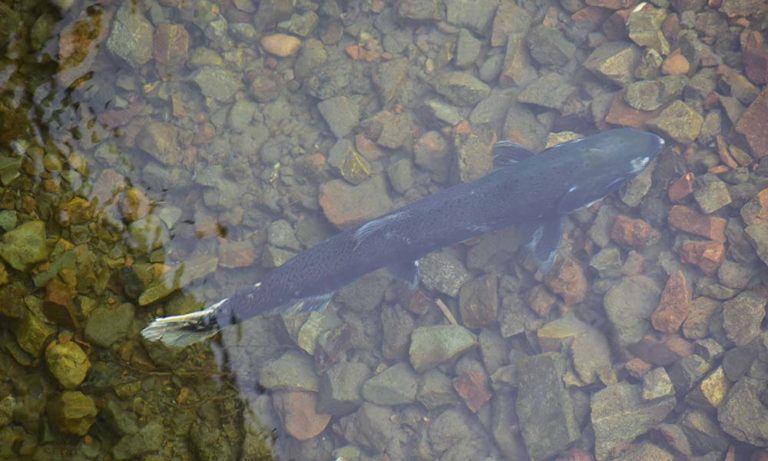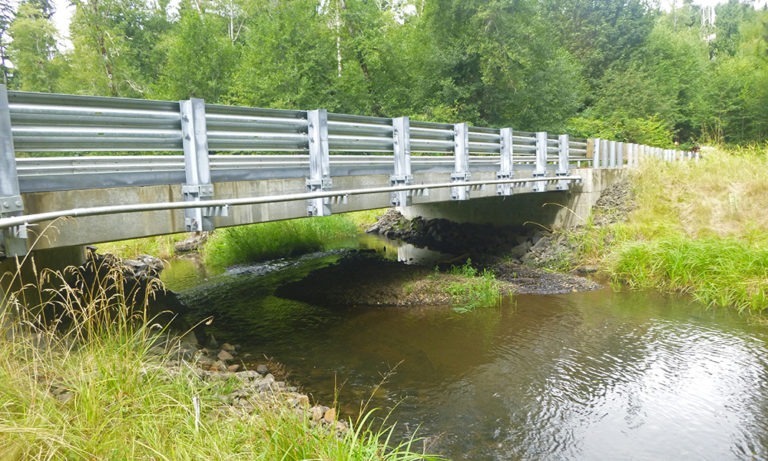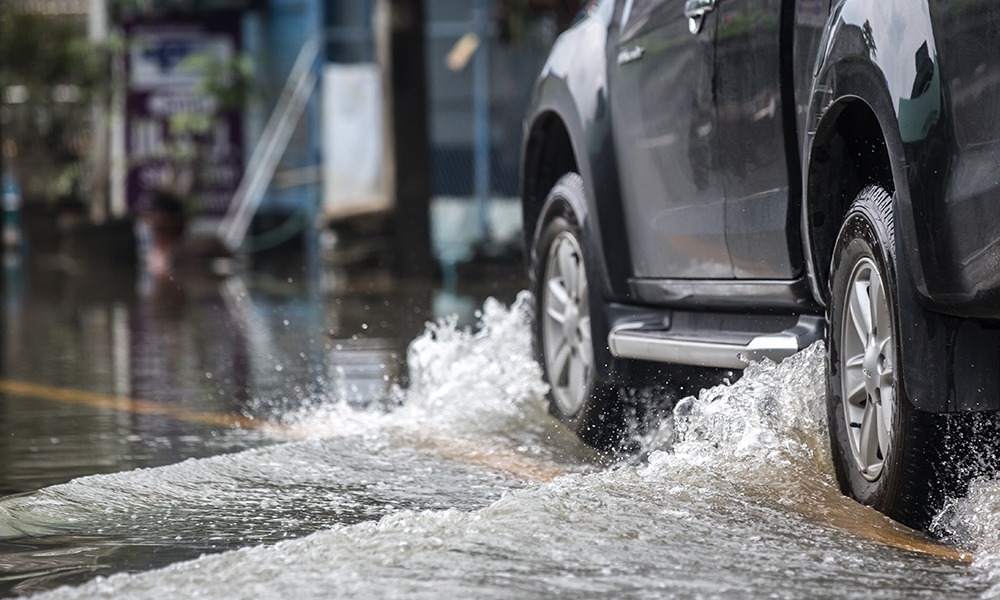Organizations treating stormwater or holding a stormwater permit should be aware of a new emerging contaminant, 6PPD-quinone (6PPD-Q) and know how to treat it. While Pacific Northwest manufacturers, developers, municipalities, and others are strongly affected by the problems 6PPD-Q is creating, the issue may eventually affect entities across the U.S.
But what exactly is the risk posed by 6PPD, a seemingly innocuous antioxidant used to stabilize tires and prolong their life? On its own, 6PPD is not toxic. When it reacts with ozone, it converts to 6PPD-Q and becomes toxic to certain aquatic organisms. As it turns out, 6PPD-Q is extremely harmful to coho salmon (and perhaps other salmon species). Here’s what happens: As tires degrade over time, including oxidizing from ozone in the air, tiny fragments containing 6PPD-Q break off the tires. With 281 million vehicles operating in the U.S., these particles deposit on our country’s roadways. They then leach into the soil or are transported with surface runoff into storm drains, and eventually find their way into water sources.
The health of salmon in the Pacific Northwest is a complicated issue from social, economic, environmental, and emotional perspectives. Many different groups have worked together over the last few decades to improve salmon runs, such as replacing culverts, generally improving habitats, and facilitating the migration of and spawning area for the fish. Once these had been addressed, scientists and other experts were stumped as to why coho salmon, in particular, were dying once they arrived to spawn in urban streams.
There is body of evidence that suggests that salmon deaths may be associated with urban runoff and stormwater, possibly originating from tire fragments associated with tire wear and tear. But for the last decade or so, scientists studying decreasing salmon populations could not identify exactly which chemicals were responsible. Recently, however, scientists at the University of Washington identified a possibly culpable chemical.
It’s still not known exactly how 6PPD-Q affects coho salmon, and at what levels, and how other species may be affected (scientists believe this is likely, but there is no definitive evidence yet to confirm this suspicion). In addition, researchers suspect that recycled tire products, such as crumb rubber commonly used as filler for synthetic turf fields, roofing materials, and more, are also likely toxic.
While the impact to coho salmon has been observed from British Columbia to Oregon, 6PPD-Q has also been found in stormwater runoff in other areas of the U.S. But there’s some good news: We have expertise and experience with various management and treatment alternatives that can benefit our clients.

The solutions
With regulations likely on the horizon, particularly in the Pacific Northwest, your organization will want to prepare for challenges posed by 6PPD-Q. There are effective solutions available to eliminate or minimize releases of 6PPD-Q and mitigate possible impacts to coho salmon, other aquatic organisms, and humans:
- Treat stormwater runoff using biofiltration. This filtering process uses porous material, such as compost, granulated active carbon, or sand, to remove 6PPD-Q from the water and eliminate or reduce the transport of tire fragments to downstream surface water bodies.
- When retrofitting or redeveloping an area, include a biofiltration system (for example, rain gardens) as part of your initial design.
- Institute best management practices for dealing with stormwater releases. These can include, but are not limited to, street sweeping, covering storage areas, and installing vegetated swales and/or detention/retention basins.
- Continue to ask the question: Are we adequately treating stormwater runoff to reduce or eliminate the downstream transport of 6PPD-Q?
- Work with a stormwater expert to ensure that your organization understands potential risks and is following best practices for mitigating 6PPD-Q.
- Companies with vehicle fleets should find ways to minimize driving (or flying) to reduce the amount of tire particles released onto roadways. Consumers can participate in this effort as well.
- Tire manufacturers may need to develop safer alternatives to 6PPD while continuing to avoid problems with substitutes such as those created by the per- and polyfluoroalkyl substances (PFAS) alternative GenX.
- Be careful not to use recycled tire materials where there’s a reasonable risk of 6PPD-Q runoff to sensitive waterways.

If you have questions about 6PPD-Q related to your company’s products or processes, contact me at the link below.
Published: 9/16/2021
- Aerospace
- Government infrastructure
- Industrial and manufacturing
- Airports
- Government facilities
- Automotive
- Transportation
- Contaminated site management
- Emerging contaminants
- PFAS
- Stormwater
Author

Principal Consultant, Geochemistry




